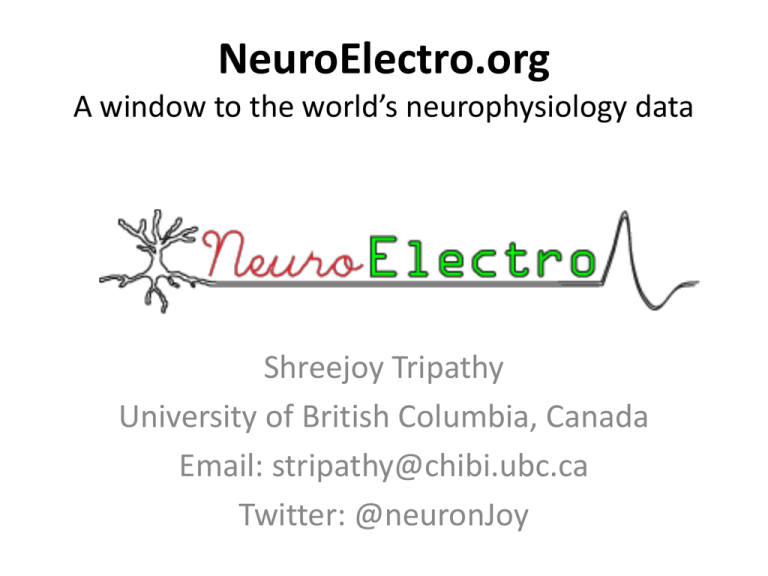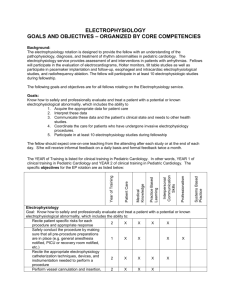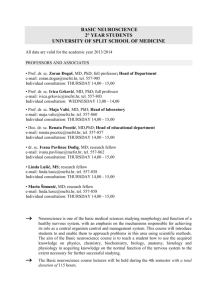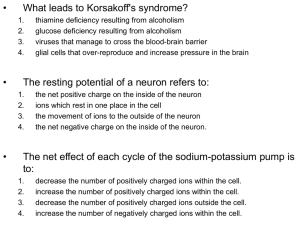neuroelectro_incf_2014
advertisement

NeuroElectro.org A window to the world’s neurophysiology data Shreejoy Tripathy University of British Columbia, Canada Email: stripathy@chibi.ubc.ca Twitter: @neuronJoy Main Idea • Given that there is an extensive neuron electrophysiology literature, what can we learn by compiling it? PubMed search: neuron AND (electrophysiology OR biophysical OR neurophysiology) >45K articles Electrophysiology literature is notoriously heterogeneous Electrophysiology literature is notoriously heterogeneous Input resistance measurement differences NeuroElectro overall methodology Semi-automated text-mining overview • Identify within data tables: – Neuron types (from NeuroLex.org) – Biophysical properties (in normotypic conditions) – Biophysical data values “Experiments were conducted in acutely prepared brain slices of 24- to 28-day-old (65– 120 g) male Wistar rats.” • Experimental conditions defined within methods sections • Text-mined data is then checked by experts 6 Tripathy et al, 2014 NeuroElectro.org web interface Code at github.com/neuroelectro Data at neuroelectro.org/api Database statistics • Currently 100 neuron types, >300 articles Extensive variability among NeuroElectro data Resting membrane potential Input resistance Tripathy et al, in revision MΩ mV Netzebrand et al, 1999 9 Accounting for differences in experimental conditions • Explain variability in electrophysiological data through influence of experimental conditions: – – – – – – species/strain electrode type animal age, recording temperature in vitro/in vivo/cell culture junction potential Electrode type 10 Tripathy et al, in revision Tripathy et al, in revision 11 Neuron clustering on basis of electrophysiology Whole-genome correlation of gene expression and electro-diversity Patterns of gene expression Systematic variation among neuron types Electrophysiological phenotypes 20,000 genes Tripathy et al, in revision/in progress 12 Making hypotheses on electrophysiology gene expression relationships • Explaining electrophysiological phenotypes in terms of underlying gene expression (and vice versa) Future directions • Continuing to expand NeuroElectro – More neuron types – More domains • Synaptic plasticity • Continuing to demonstrate the value of data integration – How can we move to a situation where experimentalists are willingly sharing their data? Acknowledgements • Pavlidis Lab @ UBC • Urban Lab @ CMU • Gerkin Lab @ ASU Shreejoy Tripathy Email: stripathy@chibi.ubc.ca Twitter: @neuronJoy URL: neuroelectro.org Code: github.com/neuroelectro 15 Mapping neuron electrophysiology to gene expression Neuron type resolution Cell layer resolution 20,000 genes Neocortex layer 5/6 Neocortex L5/6 pyramidal cell Neuron type to cell layer mapping is approximate. Will be improved in future iterations with high resolution data. Neocortex Neocortex basket cell 16 Finding genes most correlated with electrophysiological diversity Assessing predictive power between gene expression and electrophysiology











